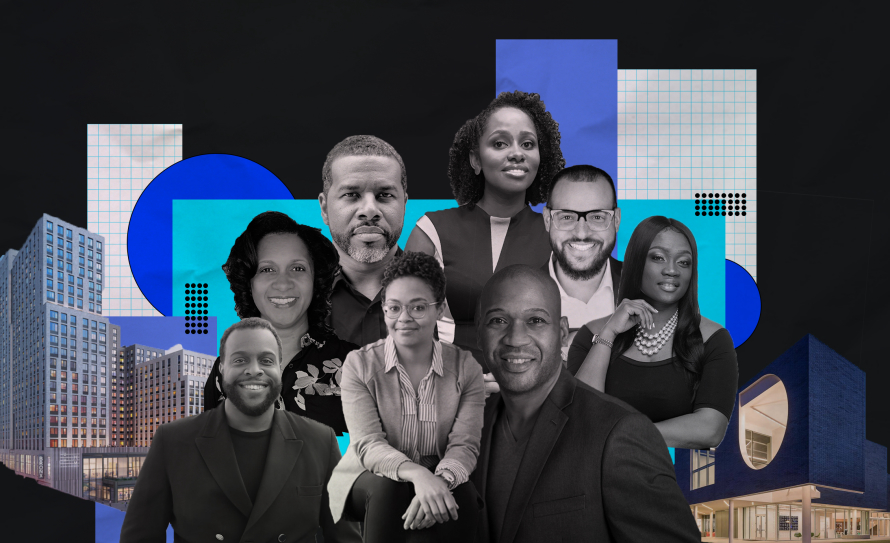
Of the 116,242 licensed architects in the United States and its territories, just two percent are Black. Only 2,325 Black architects are building the cities and suburbs, shaping the skylines and creating the museums, housing, schools, government buildings, places of worship and any other variety of structures we live in or with every day. In a nation with a population of nearly 330,064,000 people, solely 2,325 Black citizens have the power and access to physically design our built environment.
When faced with these figures, it becomes clear that the racist systems that often bar Black Americans from competing on an equal socioeconomic playing field also extend to architecture. White people have always had a head start. Licensure laws were first passed in 1897, but the first Black architect to be licensed, Paul Revere Williams, was not bestowed the title until 1921. While this marked an incredibly important milestone, society must resist the urge to celebrate isolated successes as evidence of racial equity. Instead, it raises the question: why did this take so long?
Today, statistical outliers are more plentiful but the trend has not significantly changed; according to the data from annual National Council of Architectural Registration Boards reports, that two percent figure is in stasis and has been for at least the last five years. Non-Black people of color account for nine percent of the nation’s licensed architects. White architects continue to make up the vast majority of industry professionals. It’s not uncommon to find a design firm where the number of Black architects is fewer than five. Black partners are even more scarce.
Since the murder of George Floyd by Minneapolis police on May 25, many architectural firms, professional institutions and media companies have pledged to correct the lack of Black equity in their staffs, coverage and projects. But with these pledges comes the risk of tokenism. “Putting out statements is important because designers and architects must participate in this conversation,” says Pascale Sablan, whose organization Beyond the Built Environment has helped to center the design work of her fellow Black architects since 2017. “But, the architecture industry can ensure sustained, meaningful change by going beyond statements of camaraderie and solidarity, to action items. It is not enough to show up to a funeral and offer your condolences; you need to bring the lasagna, too.”
In a systematically racist society, how can the industry move toward true equity? How does architecture’s lack of diversity affect the professional successes or challenges of Black architects? What kind of “othering” does it perpetuate? How do these marginalized voices want the industry to change? What are the experiences of being Black in architecture? These are a few of the questions I presented to a group of 15 Black architects over the last month. For all, one directive is clear: as the United States awakens to its embedded racism, actions speak louder than words. If the systems promoting inequality are to change, it needs to start with active reparative work by white allies.
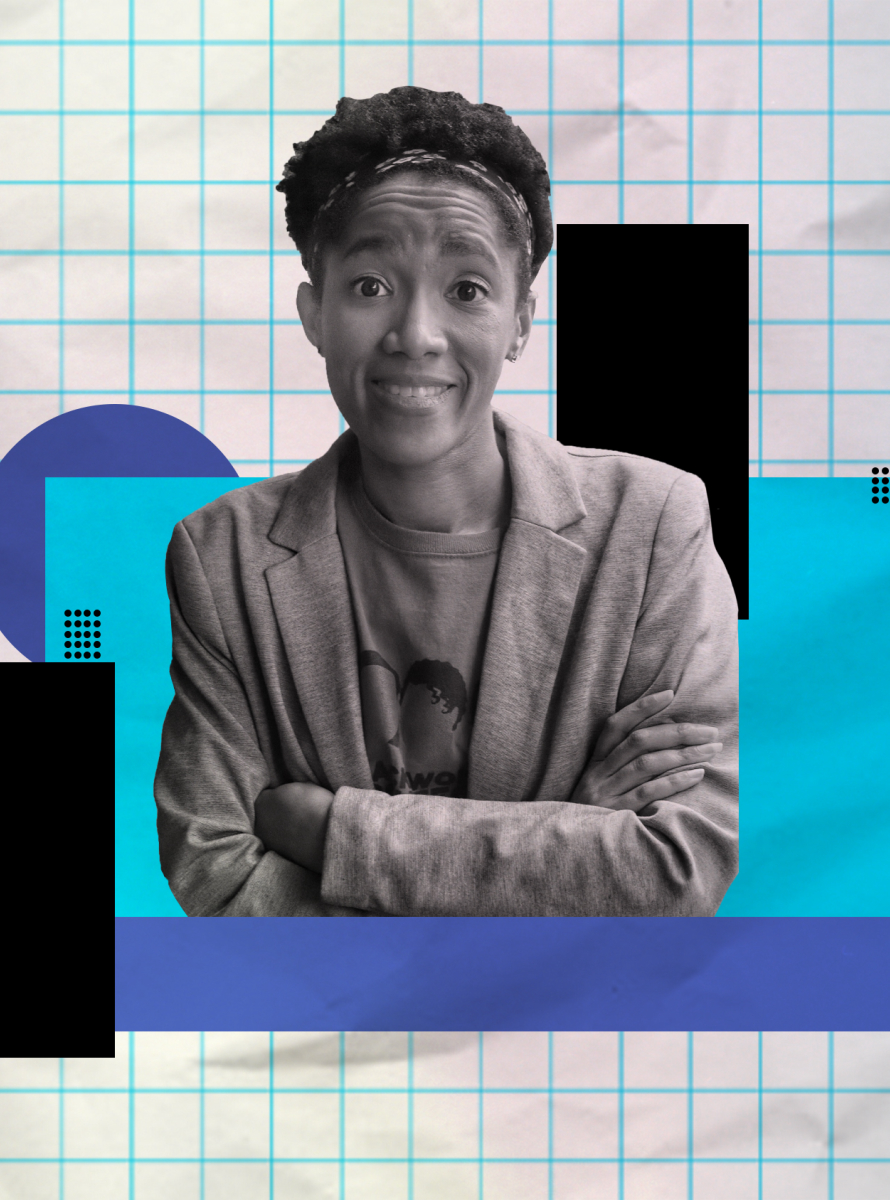
Katherine Williams, AIA, LEED AP, NOMA
Katherine Williams is a licensed architect in Northern Virginia, a senior project manager at Georgetown University, owner of real estate development firm Fifth Generation Holdings and a Black Women in Architecture Network organizer. She has written extensively about the architecture profession, diversity in the industry and community development. Katherine has served as editor for multiple publications and was the National Organization of Minority Architects (NOMA) magazine editor from 2009-2014.
“The first memory I have of feeling othered in my professional life was shortly after I graduated from university. I will start by saying I attended predominantly white schools for K-12. I was used to being the only Black face in my classes. When I received a full scholarship to Howard University, I had no idea the breadth of the effect that being in that environment would have on me personally and professionally. I was one in a sea of Black faces. It is not just that most of my peers were Black, it is that I now was hanging out with Black people from across the globe. My class references were rooted in the Black experience from throughout the diaspora. I carried that into my interactions on campus and my travels off campus, including trips around DC and my study abroad semester in Toronto.
When I left school, I returned to my hometown. I knew I should engage with organizations to start building my network to begin my career. I decided to do that by connecting to my local AIA chapter and attending an event. It was the summer after my final semester. I remember the event was at a location where there was a large monumental stair that led down into the space where everyone was gathered. I stood at the top of the stair, looked down, and the sea of white faces made me catch my breath. I had to reorient and re-armour myself. I had spent five years, mostly, without that anxiety of being the only Black face in the crowd, without worrying if people saw me for my skill and intelligence first or for my skin color. I entered the space and nervously engaged, having small talk and introducing myself to people there.
I don’t remember much more about that evening. I do know that I felt determined to make the chapter live up to what I assumed was the purpose of the organization—to help local architecture professionals—and for me that meant helping get my career started. My engagement with the chapter actually helped introduce me to my first boss. Additionally, I went on to serve on the board and restart the ARE prep program.
As a licensed, Black, woman architect, part of a 0.4 percent slice of licensed architects in the United States, I know there will be many times where I am in a room as an ‘other’ or in places without another who looks like me. I continue to be in those rooms and hopefully create space for others like me to join.”
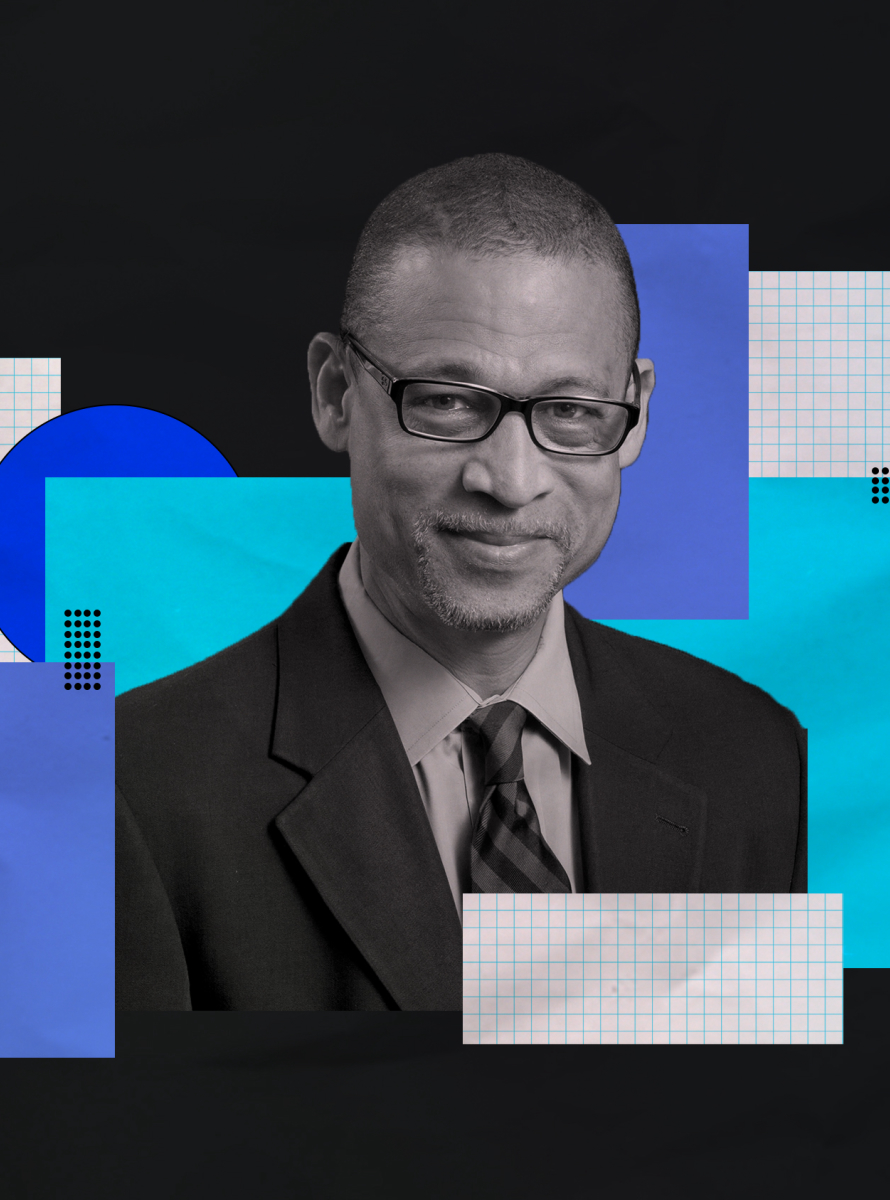
Steven Lewis, FAIA, NOMAC
Steven Lewis is a principal of urban design and planning at ZGF Architects in Los Angeles, California and the president of Thinking Leadership, a strategic planning consultancy. Formerly, he served as the urban design director for the central region of Detroit, the president of NOMA and was a Harvard Loeb Fellow from 2006 to 2007. Dedicated to advocating for his fellow architects of color, Lewis lectures across ZGF offices and elsewhere about equity in the workplace.
“You first achieve a sense of racial awareness, that you are something different than what has been reflected back to you, as a child in television and media (which at my time of growing up in the early 1960s was “Dennis the Menace” and “The Andy Griffith Show”) when you are confronted with some event that shakes that paradigm. You then become immediately aware of two parallel universes. Black folks have, as a matter of survival, had to navigate seamlessly through those two parallel universes, but most white folks don’t have that racial awareness: they just are. For them, there has always been one universe. Well, when George Floyd was murdered, and, this is my Trekkie coming out, a wormhole opened up between those two universes and all the white folks got sucked into the Black universe and now see what we see. At that instant, the wall between the two crumbled and we are all in one place now with no choice but to move forward.
What worries me is that wealth and power are so concentrated in this country that the acquiescence to a new realigned society is the last thing that leaders want. They have ways of subverting these movements, which they have demonstrated in the past. Ironically the loss of John Lewis reminds us that we have been here before, maybe not quite in the same way, particularly with young white folks out in the streets saying, ‘this is crazy; we’re not tolerating this.’ If the groundswell can build the confidence among the general population to not be paralyzed by the enormity of this task of gratitude, it then must accept that this is an arc, a lifetime journey. 43 years ago, I was told suddenly that I had to stick an insulin syringe in my arm; I was diagnosed with type 1 diabetes and that day forever changed my life. I have to have insulin by some other means than my own production every day to be alive. I had to accept that new variable in my life forever and there have been good days and there have been bad days, just as on this quest there will be missteps and I say to my white colleagues who are afraid of saying the wrong thing that racism is white people’s problem to dismantle. It is our job as Black folks to be the sherpas, the guides. We will pick you up when you fall off the path but we have to allow you to own it, to make the necessary steps to fix it. We are generations from solving racism but we can get on the path and we have enough momentum on the path.
My father was an architect. RIP Roger Lewis. He left us about three years ago at age 88. I knew about architecture, unlike many of my friends, from a young age. It was quite an awakening when I arrived at school, at Syracuse University, because architecture revealed itself in a much different way than what I had been exposed to through my dad. Attending a majority institution I was part of a small cohort of Black folks who were in the school at the time and there were instances where we experienced racism, but, being a product of coming of age during the civil unrest of the 1960s and having parents that were very active and aware, I had a social consciousness at an early age.
My dad, having grown up in Harlem, was able to start a firm around 1970 with two partners, as were other colleagues of his (J. Max Bond Jr., etc.) and I was in the room as a teenager when they would meet as NYCOBA,—the New York Coalition of Black Architects—which still exists today as a chapter of NOMA. I was horrified by what they had to encounter just trying to establish themselves as architects and professionals in that society. That was it. I had that consciousness and I was living in those parallel universes where if I saw racism, or if it affected me or touched me, I would name it, call it out and attack it intellectually, not emotionally.
That just rolled through college and out into the world. Because I never met a word I didn't like and communication is probably the greatest gift I have been given, I became a natural spokesperson on these issues. Part of my role right now is helping build strength and confidence among my white colleagues. I’ve been invited to have a seat at the AIA Large Firm Roundtable and I’m talking to their CEOs and I’m offering them wisdom and advice that they are very open to and have an appetite for. For example, just the other day they were allocating funds within each of the firms to financially support the historically Black colleges and universities (HBCUs). Out of over 100 HBCUs, only seven have accredited architecture programs and it’s those seven schools that are responsible for graduating 85% of Black architecture students, yet those schools are underfunded and under-resourced. There’s a recognition that this is the farm; we’ve got to grow these crops and make them strong and well. They’re throwing money at other resources who are attacking the problem directly and I said, ‘why don’t all of you reprogram a chunk of that money, create a JEDI bank (Justice, Equality, Diversity, Inclusion) within the firm, and that way, instead of giving the money to someone else to do the work, you can do it yourselves? You have many people in your firms, particularly young people, who want to take direct action and they are somewhat limited because they may not have a charge number to bill their hours.’ They loved that idea.
It’s one thing to throw money at it and it’s another to be the action. With best intentions, they were putting money into good causes, but you’ve got to do the work. That’s the hard part.”

On Tokenism In the Workplace
“My early experience in architecture required me to seek mentors who understood the direct and/or passive aggressive behaviors towards me in the workplace. The lack of diversity in the profession provided the opportunity for a former boss to tell me she was using reverse racism with me. Once I got licensed and I kept being treated differently from my colleagues who got licensed after me and had equal qualifications and responsibilities, I decided that I wouldn't let years go by letting others who don't want to see my worth have control over my career. My true value was never recognized until I provided myself with the opportunities when starting my own practice.” - Samantha Josaphat, RA, NCARB, NOMA, LEED, is the principal of Studio 397 Architecture in Brooklyn, president of NYCOBA|NOMA and an assistant professor at the Spitzer School of Architecture at City College in New York.
“I think the biggest struggle is having only a handful of Black architects in leadership roles to look up to, work with and learn from. Being one of a handful of Black students in school was never a non-normal thing, having grown up in a predominately white city (Madison, Wisconsin), going to predominantly white schools (UW Milwaukee for my BS Arch Studies and IIT for my Masters of Architecture) and working in a predominantly white profession. It wasn’t until I became heavily involved in NOMA that it hammered home that there is a ton of diverse talent out there, but that group is comparatively so small that I can know many of them on a personal basis. It's encouraging to see so many successful and talented Black and brown designers around the country and always an adrenaline boost to whatever I am working on when I am around them. I'd love for the profession to be so diverse that I don’t automatically become friends with all of the Black employees, if for no other reason than there are too many of them.” - Richie Hands, Assoc. AIA, LEED AP BD+C, NOMA, is an associate at Lamar Johnson Collaborative in Chicago and the NOMA National Project Pipeline Co-Chair.
“Being ‘othered’ means the reality of being or feeling as though I am the only person of color in architecture over my 25 years of an academic and professional career. Conversely, it also means you can often be in high demand because of your “otherness.” I don’t view this peculiarity as a spectacle anymore, but as a true indicator that, unlike many other professions which may have reached a higher percentage of minority participation, architecture is not one of them and frankly neither is design. The ‘othered’ has been a part of my experience from 6 years of university, studying in Europe and India, practicing in several American cities, Asia and the Caribbean.
The profession, like many others, is built on experiences and relationships. It would be ideal if there was a system of meritocracy but we don’t live in a utopia. There exist conscious and unconscious biases, however, moments such as this one have forced us collectively to recognize and openly discuss these biases. I am well aware of the need to label certain firms ‘minority firms’—the bias is real and design firms need a bona fide seat at the table. The question then becomes what is our perceived value, a check on a mandated minority participation box, or being recognized as equally talented design professionals and business owners? This would be a worthwhile change.” - Daimian S. Hines, AIA, NOMA, LEED AP, is a principal of Hines Architecture + Design in Houston, Texas and the president of the Houston chapter of NOMA.
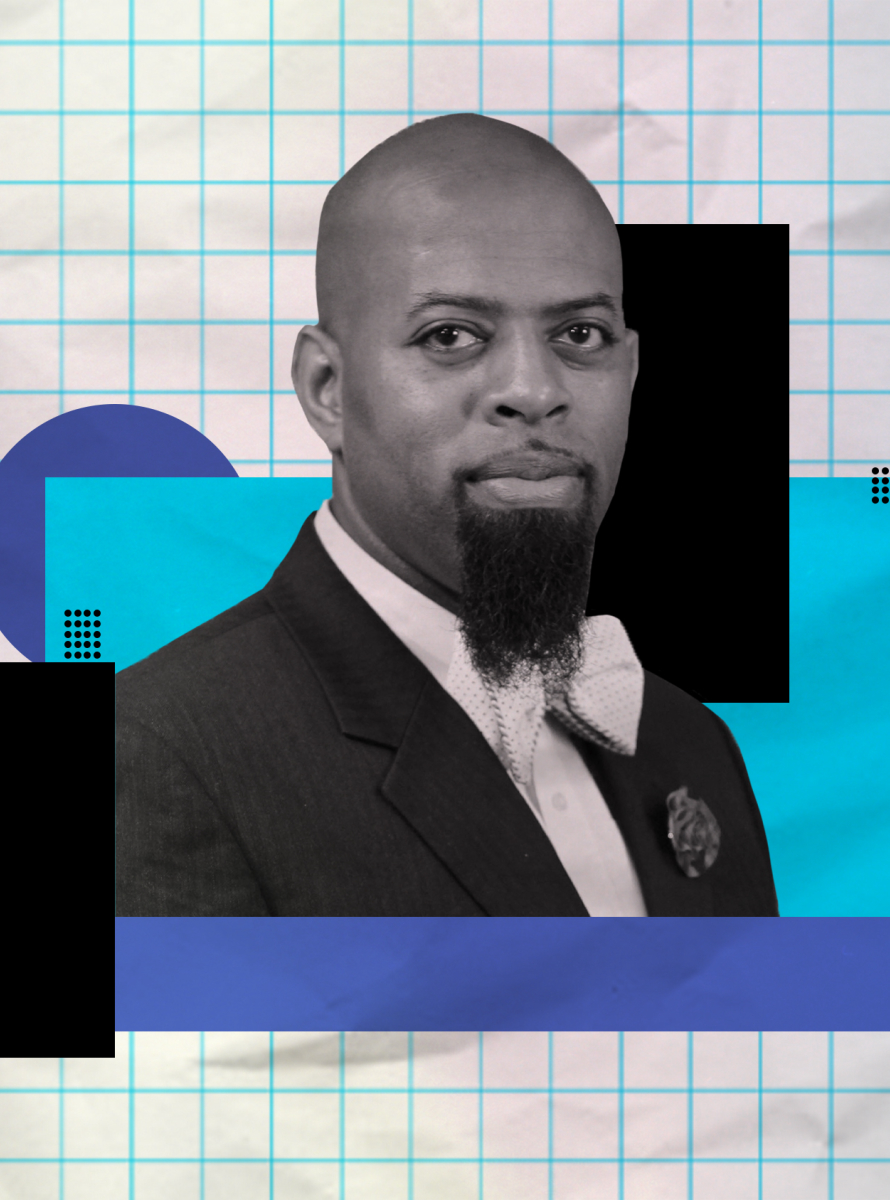
Dr. Kwesi Daniels, MArch, MSc Sust. Mgmt, ABD
Dr. Kwesi Daniels is a department head and associate professor at the Robert R. Taylor School of Architecture and Construction Science at Tuskegee University, a historically Black university in Tuskegee, Alabama.
“The experience of being Black in architecture involves learning about a discipline that does not include the contributions of African American architects like Paul Revere Williams, Robert R. Taylor, Walter T. Bailey and Wallace Rayfield within the canons of the profession. It involves being taught to admire and replicate planning strategies like Levittown, Long Island as examples of successful community developments, without being taught how they were developed to maintain racial segregation. It means learning how architects have been at the center of social engineering and how their efforts have been responsible for creating conditions that have adversely affected so many communities of color for generations. The experience of being Black in architecture requires you to unearth the accomplishments of other Blacks in architecture to understand how they navigated the often tumultuous waters of the profession. It involves developing your own methods to address the challenges that face communities of color because the projects we work on in school do not prepare us to design our spaces. My experience of being Black in architecture involved me teaching myself how to use design to celebrate my culture.”

On the Importance of Genuine Allyship
“As someone employed at a large firm, my biggest concern was not so much tokenism as it was optical allyship for the purposes of improved perception. It’s important the firm not only recognizes me as a licensed Black architect, but also, a skilled designer who is a contributing member of every team that I am on. I avoid tokenism by engaging with my colleagues’ ideas about equity and diversity. If they send me links to initiatives and strategies used by other organizations, or have suggestions about how the firm can improve its approaches to equity and diversity, I always turn the onus back on them and ask, ‘That’s great, do you want to lead that initiative?’ or ‘Sounds good, how can I help you get that off the ground?’
It’s important for allies and co-conspirators to understand that the pledges made by firms recently are not the sole responsibility of the BIPOC employees to execute, but are instead instilled in the mission of the firm itself. As such, every employee is a steward for that mission. Firms should not publicly dedicate themselves to uplift the Black community, then ask their Black employees to be the only ones making it happen. During my conversations with our firm’s leadership, I remind everyone this is the firm’s mission, not the mission of a limited committee. I learned this strategy from watching my mentor, NOMA President Kimberly Dowdell. She invites everyone to the table and makes them a stakeholder, and ensures that each person has a committed interest in the improvement of our profession.” - Melanie Ray, AIA, LEED Green Associate, NOMA, NCARB, is an associate at Hord Coplan Macht in Baltimore, the NOMA Northeast university liaison and a founding member and treasurer for the Baltimore chapter of NOMA.
“There has been quite a bit more attention being given to my work over the last two months since George Floyd was publicly stripped of his right to live in America by an officer of its most cherished institution. However, none of that attention has turned into any kind of offer for new design commissions or ways of expanding my professional practice. It has mostly resulted in more Instagram followers and a few invitations to explain to the rest of America what it’s like to be a Black architect. Each of these instances has made me feel ‘othered.’ - Sekou Cooke, RA, is the owner or Sekou Cooke Studio in Syracuse, New York and an assistant professor at Syracuse University’s School of Architecture.
"Advocacy work can and should start on your block, in your neighborhood, in your community. See what injustices are impacting your town and take that as a beginning standpoint. Once you’ve identified the community’s specific oppressions, whether that be architectural or other, you should reach out to the community leaders and get more information, understand the politics of the issue, understand the institutions and the characters that perpetuate the injustice. Together with that deeper level of understanding, ask how you can get involved. Let’s make the fight for justice personal; bring it home to your family, your neighbor, your block and your community and make them better and more just." - Pascale Sablan, AIA, NOMA, LEED, is a senior associate at S9 Architecture and the founder and executive director of Beyond the Build Environment.
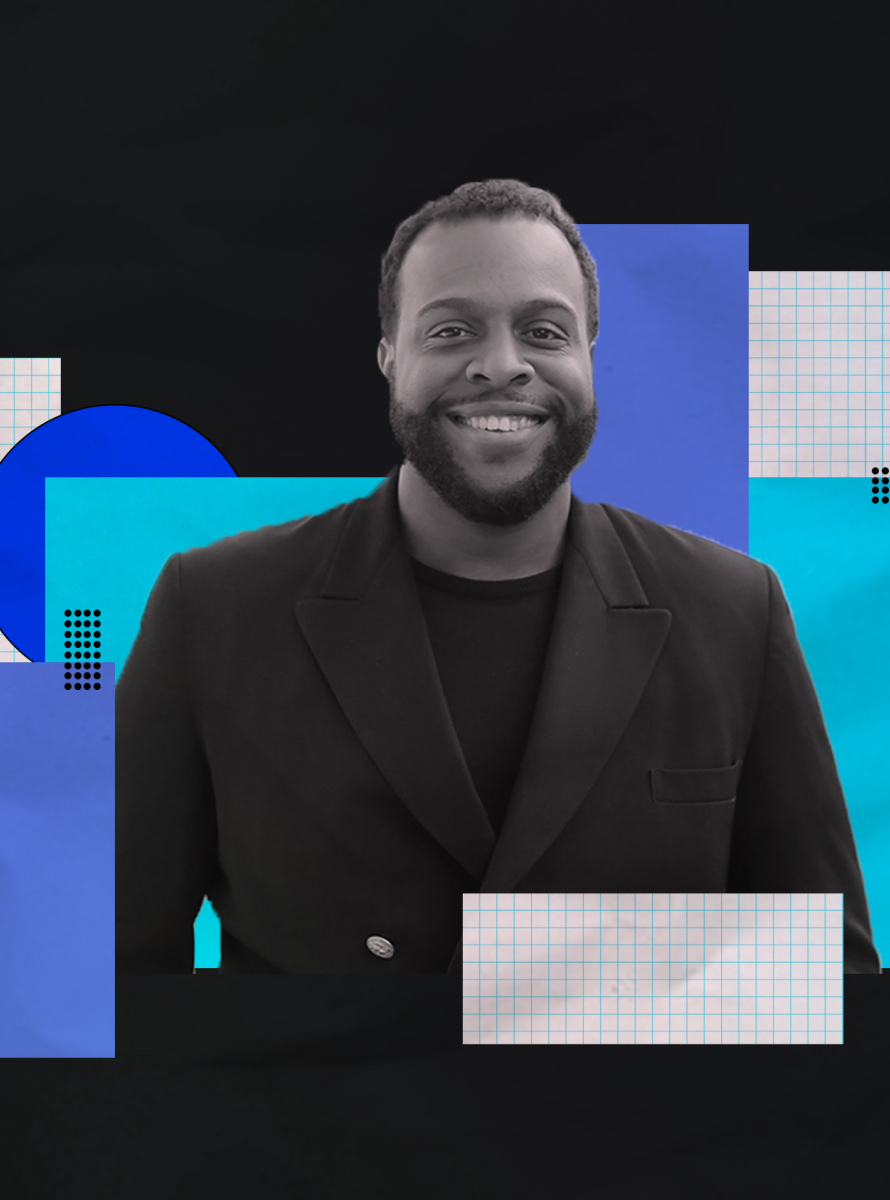
Ibrahim Greenidge, AIA, NCARB, NOMA
Ibrahim Greenidge is managing partner at BOLT Architecture in Brooklyn and is on the Black Gotham and ONENYC 2050 advisory boards. He is the former president of the New York Coalition of Black Architects and the author of the forthcoming book, ‘It’s Going to Be Brick: Being Black in Architecture.’
“It’s 1982, I’m born to two Muslim-converted parents who are first generation Americans. They move to Brooklyn. When I was a young kid and Gavin Cato was killed, the environment started to shift around me. There were metal detectors at school. The kids weren’t looting and rioting during the Crown Heights Riots but because the school that we lived in had predominantly white female teachers, there needed to be some sort of safety in place. What also starts to resonate with me is the lack of public spaces. The lack of spaces for us to congregate outside of Prospect Park. In a lot of other communities there are bath houses, private spaces, yoga studios, meditation spaces. I didn’t have the words for this. No one is telling me that architects, engineers, and urban planners designed this.
I moved to Long Island, New York to a completely suburban lifestyle. I go from being a majority Black kid to one of only a few Black kids. What started to happen was that my high school started to see a shift in migration and culture because of its education. The demographic of the school started to see white flight. I am fortunate that I grew up in a very mixed environment. I thought the world operated that way.
I was always great with my hands. In 10th grade, people began asking, ‘what do you want to do?’ No one ever mentioned architecture. It’s not in their vocabulary. They had never met an architect. So, one summer, my granddad asked me to help him build a backyard shed. What I started to appreciate was the art and science of building. I went back to school and told them that I wanted to become an architect and they said, ‘you should become a janitor or a mechanic.’ My father said to me, ‘why do you have to be a mechanic, why can’t you be the one designing things?’
As a Black man in college, the movie Get Out is a perfect example of how it felt: surrounded by white fraternities, surrounded by these acts of subtle racism, your models being destroyed at night, people leaving you in parking lots when you had asked for a ride, teachers giving you different grades because they don’t feel you participated meanwhile your classmates are saying, ‘he is doing even more than us.’ Unfortunately, this has been my reality since I was a young boy: being in the streets and stopped by police, learning how to be Black in corporate America, what projects don’t you want to work on. Why is the Black person the only one being put on the jail projects?
I came to a point in my career where I had to think, ‘do I want to continue building these structures that I consider unethical?’ Without these events, I probably would have never thought of quitting my job and beginning my own practice. When you’re in college and you’re in this environment, it’s about survival. You’ve got your blinders on. It’s just your reality. You think that this is what it’s like in architecture. But then, when you join a firm, you realize this is only happening to you.
Has it been made clear in architecture that I am one of a few? Absolutely. Have there been moments where I am in the room with Black engineers and Black contractors? Yes, sure there have been. But those are far between. My work experience has given me the pleasure of working on projects of all scales and types. But, I found out everything that I didn’t like in the corporate structure and, in my own firm, I don’t do that here.”

On The Importance of Mentorship
“In order to change the face of architecture we have to dedicate time and resources towards solidifying the pipeline for the next generation of minority architects and designers. Over the last 15+ years I’ve invested the majority of my time and energy outside of work to the ACE Mentor Program and NOMA’s Project Pipeline Architecture Camp, two national programs focused on exposing career opportunities to young students in underserved, under represented, and under resourced communities. Each program employs different tactics and strategies to expand their catchment areas across the country with the support of various industry sponsors and partnerships.
Within ACE I have served as a mentor, team leader, Associate Board member and co-instructor for the Summer Design Build Workshop over the last 13+ years in Chicago. I have mentored students along their journey towards ACE professions, first as young high school students solidifying their plans to pursue ACE disciplines and degrees, followed by coaching to help them land their first summer internship as college students, and then finally connecting them with potential employers to help them land their first job out of school as young professionals. To be with a student through that journey and see the mission and process come full circle is honestly one of the most rewarding feelings as a mentor, and gives me reassurance of the impact we’re making on young students lives as we work towards changing the face of our profession.” - Jason Pugh, AIA, AICP, NOMA, LEED AP, is an associate at Gensler in Chicago, the NOMA President-Elect 2021-2023 and on the associate board for the Chicago ACE Mentor Program.
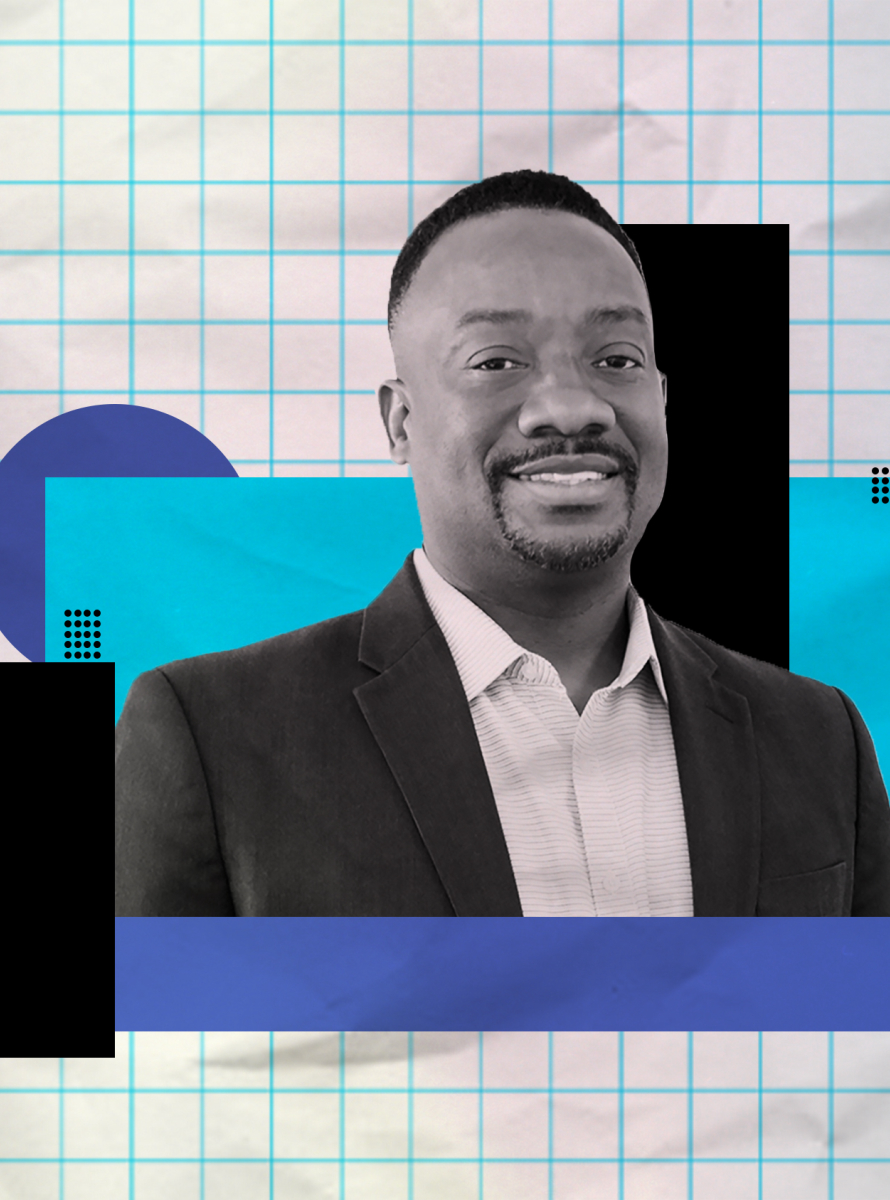
“Unlike many colleagues, I didn't go to a Historically Black College for undergraduate education. I attended Iowa State University on a full academic scholarship, and was also a scholarship athlete in Track and Field. During my undergraduate career, four faculty members stand out as advocates for me, and were instrumental in helping me define and discover my potential and passion in the architecture industry.
David Block was a former collegiate student athlete and successful residential architect who I will always have gratitude for. Without him as an advocate, I'm not sure what my career would be like, because I would have transferred to another school and started off in a completely different environment. He was the earliest influence I had on design, professional practice and sustainability. He helped me build my confidence and ignore stereotypes related to architecture as a predominantly white profession.
Brenda Jones was the first Black faculty member I met at Iowa State. She was a visibly strong Black woman who was one of the best at what she did. She was in the Art department and I attribute the refinement in my rendering and drawing skills to her. My drawing capabilities and eye for compositions became a major key to my success as a designer.
Kate Schwennsen, who later became the Chair of the Architecture program and President of the American Institute of Architects, was one of my instructors. She pushed me. She supported me. And she inspired me. She was the first female licensed architect that I encountered and is a big part of why I’ve become an advocate for gender equity on my teams and in my firm.
The late John Rice was initially one of the hardest on me about my athletic ‘distractions.’ He was a tireless advocate that I acknowledge for giving foundation to my design process and design thinking. We would go on field trips, look at buildings, and talk about design, structure and proportions, as well as the interactions between interior, exterior and landscape architecture.” - Richey Madison, RA, NCARB, NOMA, is a principal in higher education & science+technology leader at Stantec in Irvine, California.
"I look up to past and present industry leaders like Theaster Gates, Michael Reynolds, Buckminster Fuller, J. Max Bond Jr., Phil Freelon, Paul Revere Williams and Robert R Taylor. All of them have been thought leaders and have pushed the envelope beyond what's possible. They have questioned the rules that society has imposed on everyone and found ways to reframe those rules to achieve results that are worthy of respect. My mentors have been architects like Eddy Todd of Pensacola, Florida; Ken Casey of Chicago; Bryan Hudson of Chicago, a past president of NOMA, and Ian Smith of Philadelphia. They have all guided me in different ways and have encouraged me to stay in the profession." - Dr. Kwesi Daniels, MArch, MSc Sust. Mgmt, ABD

Anzilla R. Gilmore, FAIA, NOMA
Anzilla R. Gilmore is the assistant director for project management and engineering at Rice University in Houston, Texas and is a founding member of the Houston chapter of NOMA.
“I am very aware of my race in my experience practicing architecture and working as a project manager as an owner’s representative. It is rare to walk into a room and see anyone that looks like me. That can be isolating when you are young. But I think it has helped me to become more unapologetically Black. When I am the only one in a room, I like to believe that everyone there must know I am pretty special to have made it to the table, at least that it is what I tell myself.
I cannot say that the lack of diversity has been an obvious professional challenge for me. I suspect that is because I have never known anything other than what I am experiencing, so it is normalized. In fact, the lack of diversity has been the thing that drives me. I am driven to diversify the profession and have made it my life’s work. When I became licensed in 2004, I realized I had never met a Black female architect. I have done my best to be visible enough to the students and emerging professionals around me to make sure that no Black female in architecture can ever say they have not ever met a Black female architect.
I felt ‘othered’ during my time in graduate school and as an intern at a large firm. My first interaction with my graduate advisor came with an insult to the degree I received from an HBCU. That set the tone for the rest of my time in that program; 4.5 years spent building confidence in my ability was quickly torn down at this majority institution. The firm I worked for was also not nurturing in any way. I liken it to a high school with popular kids: if you were not in the in-crowd, you would not succeed. The firm showed no interest in me or my future with the firm. The insecurities I developed during that experience as the only Black woman in that program and at that firm took years to shake.
I don’t believe tokenism should be a concern. As long as universities are committed to producing capable professionals, no Black person should feel like a token and no one should assume they are a token. The idea that the handful of Black students that make it through the rigors of an architecture program would somehow only get a job because of tokenism is in itself offensive. I have never felt like a token because I know I am capable, talented and worthy.”
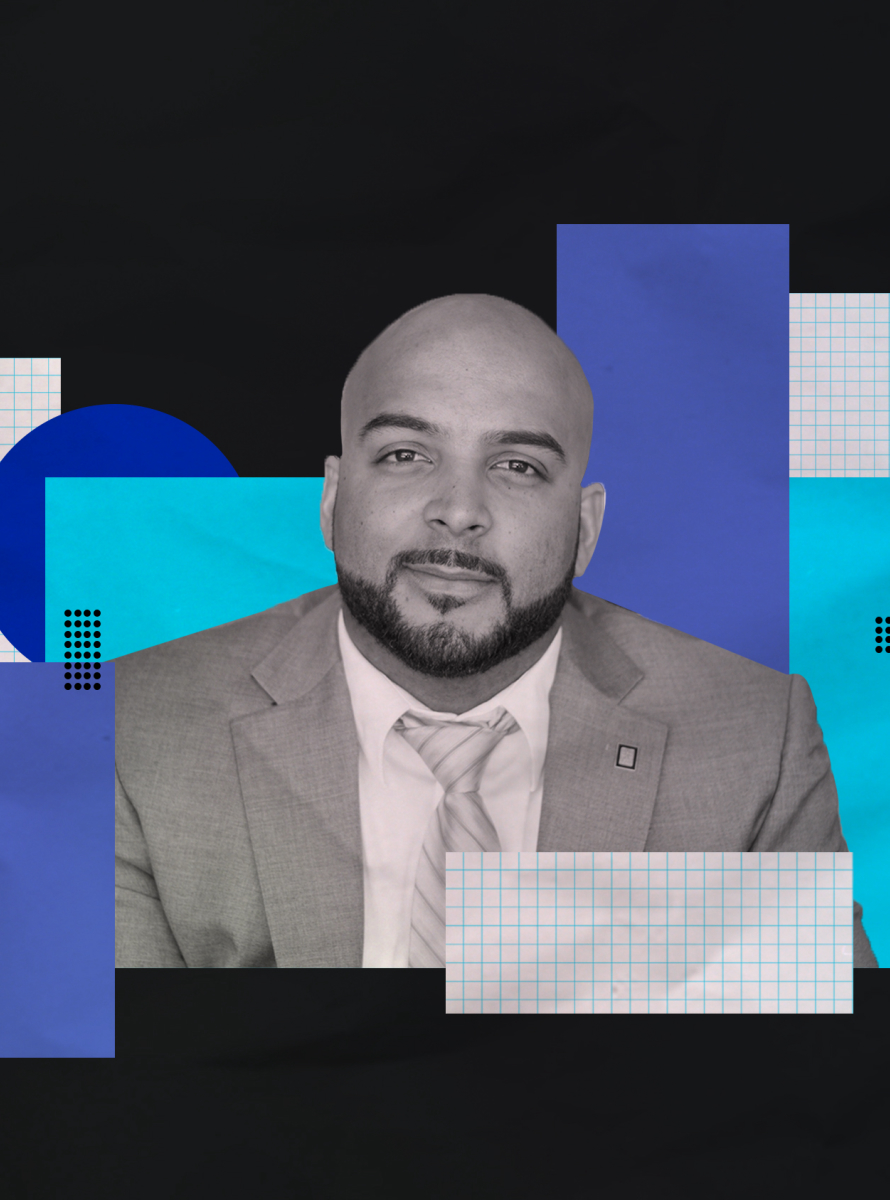
On Actionable Ways the Industry Should Change
“Our profession needs an expanded view of successful design. Great design is often viewed through a euro-centric, elite-focused prism. Projects that serve/transform communities—often with extremely small budgets/limited resources available for design—are regularly overlooked during awards cycles. These, coincidentally, are typically the projects that many small Black-, women- or other minority-owned firms work on. The self-generated perception that the architecture profession hyper-values highly visible buildings produced for wealthy/elite patrons and/or public clientele has disconnected us from society and, in my opinion, rendered mute our voices in shaping society.” - Renauld Deandre Mitchell, AIA, NOMA, NCARB, LEED AP BD+C, is managing partner of the Chicago and Washington, D.C. offices of Moody Nolan, the largest Black-owned firm in the United States.
“There are many of us who did not come from a solid foundation—we are building from scratch on a very shaky one. We don’t come from inheritances, connections, or parents who are college graduates. The removal of racist monuments is slight progress, but the actual work will come when we remove racist systems. When that happens, the industry can take the necessary steps toward equity. It should be a common practice to provide opportunities for minorities to lead, individually and in joint ventures. Society should revisit systemic barriers in promotion policies and companies should diversify their boards of directors. Universities should diversify those who are considered scholars as well as their notions of scholarship. Bring in professionals to train your leadership, professors and employees on justice, equity, diversity and inclusion.” - Tiffany D. Brown, Assoc. AIA, M.B.A, NOMA, is a project manager at SmithGroup, executive manager at NOMA, founding member of NOMA Detroit and the founder of 400 Forward, a nonprofit that introduces young girls to architecture and helps guide them to become licensed architects.
“Whitney M. Young, the past president of the National Urban League, said it best in his 1968 keynote address to the American Institute of Architects: ‘Only when our profession reflects the demographic composition of the society that we serve will we truly be on the right track.’” - Dr. Kwesi Daniels, MArch, MSc Sust. Mgmt, ABD
Interviews have been edited for clarity and length.




